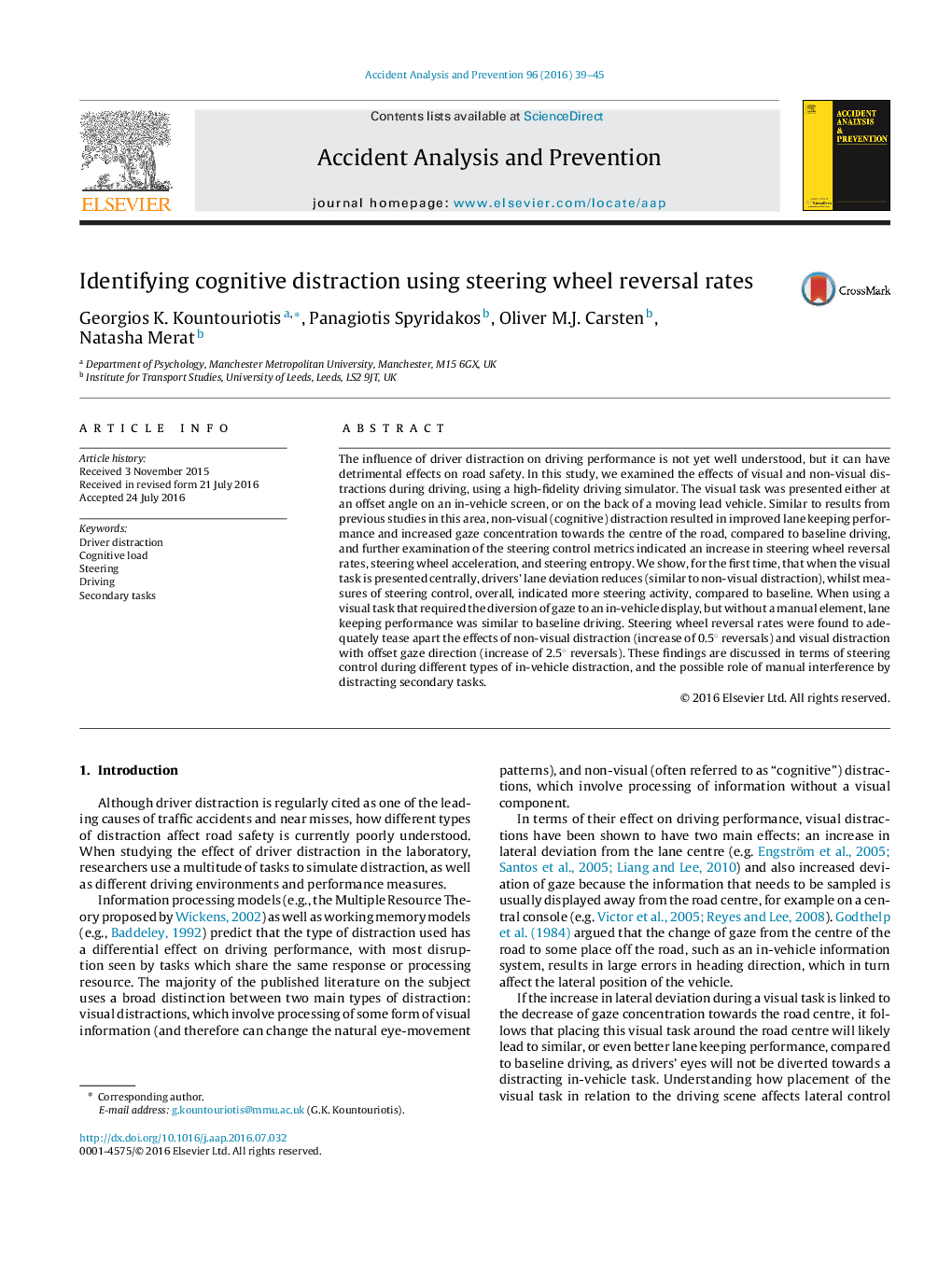| Article ID | Journal | Published Year | Pages | File Type |
|---|---|---|---|---|
| 571883 | Accident Analysis & Prevention | 2016 | 7 Pages |
Abstract
The influence of driver distraction on driving performance is not yet well understood, but it can have detrimental effects on road safety. In this study, we examined the effects of visual and non-visual distractions during driving, using a high-fidelity driving simulator. The visual task was presented either at an offset angle on an in-vehicle screen, or on the back of a moving lead vehicle. Similar to results from previous studies in this area, non-visual (cognitive) distraction resulted in improved lane keeping performance and increased gaze concentration towards the centre of the road, compared to baseline driving, and further examination of the steering control metrics indicated an increase in steering wheel reversal rates, steering wheel acceleration, and steering entropy. We show, for the first time, that when the visual task is presented centrally, drivers' lane deviation reduces (similar to non-visual distraction), whilst measures of steering control, overall, indicated more steering activity, compared to baseline. When using a visual task that required the diversion of gaze to an in-vehicle display, but without a manual element, lane keeping performance was similar to baseline driving. Steering wheel reversal rates were found to adequately tease apart the effects of non-visual distraction (increase of 0.5° reversals) and visual distraction with offset gaze direction (increase of 2.5° reversals). These findings are discussed in terms of steering control during different types of in-vehicle distraction, and the possible role of manual interference by distracting secondary tasks.
Related Topics
Physical Sciences and Engineering
Chemical Engineering
Chemical Health and Safety
Authors
Georgios K. Kountouriotis, Panagiotis Spyridakos, Oliver M.J. Carsten, Natasha Merat,
